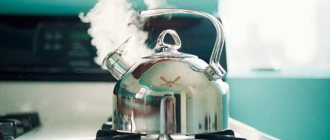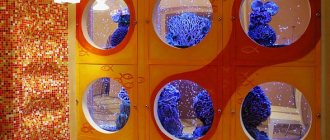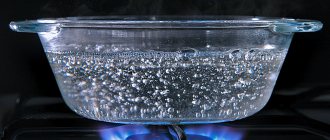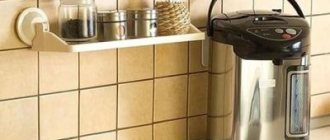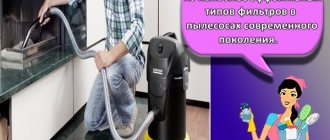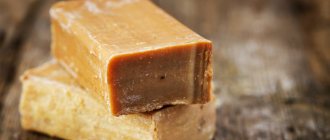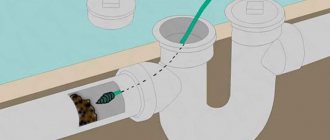Very often, the water coming from the water tap in the apartment does not meet the standards for drinking water. It may contain substances that are harmful and dangerous to human health - metal salts, ammonia, iron, acids, nitrates, etc. This is despite the fact that the water is thoroughly purified at city water treatment plants.
Even if effective purification technologies are used, the water entering apartments through worn out, rusting pipes is far from ideal and completely unsafe for consumption. In addition, chlorine is used to purify water from harmful bacteria, and using chlorinated water for drinking without preliminary purification is strictly prohibited. Therefore, it is so important to purify tap water, for which there are many methods - both the simplest and quite complex, which require modern filter systems.
Relevance of tap water purification
Tap water requires treatment even if the house is recently built and all communications are new. We are talking about mandatory purification of tap water if the house is already very old and the wear of water pipes is high. Water coming from the water supply is subjected to various purification methods if it has a cloudy color, an unpleasant odor, is too hard, contains an excessive amount of chlorine compounds and an increased amount of dissolved iron.
Water in private households, depending on the source, can be saturated with heavy metal salts, organic and inorganic components, petroleum products, even viruses and bacteria. To choose the right cleaning method, it is better to conduct a preliminary water analysis, which will reveal the quantitative and qualitative indicators of all components.
Reverse osmosis systems
This method is based on the use of reverse osmosis membranes and high pressure. The membrane has pores of 0.0001 microns, which allows only water molecules to pass through it. This method guarantees 99.9% water purification, retaining heavy metal salts, viruses and bacteria, etc. For effective operation of osmotic systems, pre-purified water and a pressure in the system of at least 3 atm are required. In domestic conditions, such systems are placed “under the sink” to obtain drinking water. In industrial systems, such installations are installed with an additional storage tank, since the water filtration rate is not high. Household osmosis in this section.
We recommend having your water tested and seeking professional advice from a specialist.
What types of drinking water contaminants are common?
Depending on what substances are contained in excess quantities in water, appropriate purification methods and filtration options are selected. The following types of water pollution are considered the most common:
- mechanical impurities – sand, sludge;
- biological contaminants - bacteria, viruses, fungi, human waste;
- pollution with organic (pesticides, phenols) and inorganic substances (salts, acids, alkalis);
- excess content of various chemicals - iron, chlorine, manganese, etc.;
- excess content of bicarbonates and sulfates , which causes an increase in water hardness;
- mixed pollution , which may include mechanical impurities and an excess of chemical elements.
If water is sent to a laboratory for analysis, then most often mixed contaminants are detected, which can be dealt with using a set of measures for purifying tap water and various filters.
Tap water purification methods
Today we can conditionally divide all methods of purifying tap water into:
- chemical - include treating water with oxidizing agents, carrying out coagulation and flocculation processes, the essence of which is the sticking together of finely suspended turbidity particles that are easily removed from the water after enlargement with filters, the use of ion exchange substances to soften water;
- biological – used for wastewater treatment using anaerobic or aerobic microorganisms;
- physical - include settling, straining, disinfection with ultraviolet rays;
- physicochemical - these include pressure aeration, electroosmosis, electrocoagulation, electroflocculation.
Often, several methods are used to disinfect water, which makes it possible to achieve high efficiency of the purification process and obtain the purest water for drinking and food.
Simple ways to purify tap water at home
If it is not known what the quality of the water entering the apartment through the water tap is, it is better to use the simplest methods that will make the water safe and make it completely drinkable. These include:
- Advocacy . This method helps rid water of chlorine, ammonia, and heavy impurities with sediment. In order for the water to settle, you need to put it in a wide basin or barrel and keep it, without covering it with a lid, for 8 hours. Then the top layer (up to about half) can be used for cooking or drinking, and the rest can be used for technical needs. When a couple of settlings have been carried out, it is necessary to rinse the inside of the container using a solution of acetic or citric acid.
- Boiling . The simplest way to remove pathogens and calcium salts from water. If the water is very hard, then after boiling, scale will form on the walls of the cookware. To kill pathogens of infectious diseases, you should boil water for at least 10 minutes.
- Silver cleaning. To rid water of harmful substances, it is enough to leave it in a silver bowl for several days. If your household does not have a silver container, you can pour water into an enamel bowl with a silver cutlery at the bottom. The water also needs to be infused this way for at least two days, after which it can be used for drinking and cooking.
- Purifying water using a filter jug . This is one of the simple and inexpensive ways to purify water at home. Using such a filter, you can soften water and remove debris, chlorine and rust from it. It is important to change the replacement filter cartridge on time so that all previously filtered harmful substances do not re-enter the purified water.
How to remove nitrates from water
Purifying water from nitrates is not too difficult, and the body will definitely thank the person for such help. Most often, nitrates enter the liquid along with industrial and agricultural wastewater, where this substance is added to accelerate the ripening of fruits.
It is not uncommon for nitrates to be present in well water, so it is important to always have the liquid tested to determine levels of the various elements before using it.
It is unlikely that you will be able to remove nitrates from tap water yourself at home; it is best to use one of the industrial methods:
- filters with anion exchange membranes;
- mechanisms operating on the basis of reverse osmosis.
Types of simple filters for water purification
For tap water that has already been purified from mechanical impurities, bacteria, viruses, and organic compounds, a filter jug is quite suitable for post-treatment. Filter dispensers that can handle large volumes of water have a similar principle of operation. In addition to cleaning, dispenser filters carry out bacterial purification and mineralization of water, thereby increasing its taste properties.
It is very convenient to use nozzles on water taps in apartments, which can be used in cases where water is required for drinking or cooking. In other cases, the nozzle can be removed, which can significantly extend the time of use of such flow filters.
Detailed information about the service Tap water analysis
Next to the sink, you can install and connect to the tap a diverter, which allows you to switch the water supply for cleaning. You can choose to use filtered water or untreated water.
Tourmaline balls for water purification
Tourmaline balls are a fairly advertised product today that allows you to purify water. They have the ability to improve the taste of water and create a special biological field inside its molecules, which significantly improves the quality of the latter.
This ability of tourmaline is due to the fact that they have the ability to charge liquid through weak generation of electric current. Even bathing in such moisture allows you to start the processes of renewal of skin cells, not to mention using it internally, which allows you to remove excess fats, lift your spirits and rejuvenate the body as a whole.
By using tourmaline balls, you can significantly saturate the liquid with oxygen. It is not difficult to use them; you just need to put the mineral in a warm liquid and leave it there for a while. After use, it should be thoroughly washed and dried. It is worth noting that the warmer the water, the higher the cleansing effect of tourmaline balls.
Complex ways to purify water at home
More complex ways to purify tap water at home include:
- Distillation is an effective, but very complex way to purify a liquid from harmful impurities; its essence is to boil tap water and use the resulting condensate from the steam for its intended purpose, for which it is necessary to use a special apparatus;
- Freezing - this method, like boiling, allows you to purify water from pathogenic bacteria; salts are almost completely removed from frozen water.
Distillation separates a liquid from its dissolved solids and liquids, which have different boiling points. This option allows you to get clean water, but it takes a lot of time and is expensive.
To use the freezer, you need to pour tap water into a plastic bottle, which you then place in the freezer. It is important to monitor the condition of the water during the freezing process - when the liquid in the bottle has frozen halfway, you need to drain the rest, and defrost the ice and use it for drinking or cooking.
Water purification by freezing
Freezing is not only a method that allows you to purify a liquid from harmful compounds, it is a way to increase its quality several times. In this case, it is saturated with oxygen and loses salts and substances unnecessary for the human body.
The following stages of freezing water can be noted:
- The water should settle a little (for half an hour), after which it can be poured into a plastic container and placed in the freezer.
- When the liquid is covered with ice around the edges, you can remove the vessel.
- Now you need to drain the liquid that has not yet frozen, it is in it that dangerous compounds accumulate.
- The frozen liquid must thaw at room temperature, after which it can be used.
Separately, it is worth noting the undeniable advantages of such a liquid:
- increasing the resources of the human body;
- removal of cholesterol and salts;
- increasing the body's resistance to viruses and diseases;
- antiallergic effect;
- rejuvenation of the body.
The most effective ways to purify tap water
Among the most effective ways to purify water from a tap are:
- Mechanical filtration . The simplest method, the essence of which is to capture particles of undissolved substances, which is possible due to the difference between the particles themselves and the channels of the filter through which the liquid flows. Simply put, this cleaning method is similar to passing water through a sieve. For example, filters that have activated carbon with a diameter of 0.1-1 mm as a retention element can trap similar particles. This cleaning method is widely used in water treatment plants. In urban environments, mechanical filtration is carried out using pre-filters.
- Electrochemical cleaning . Its essence is in redox reactions that occur in water when exposed to a strong electric current and lead to the appearance of “living” and “dead” water. The method ensures water purification from all microorganisms, but at the same time some organic substances are destroyed in it.
- Ion exchange . It is a specific method of sorption of charged ions. As a result, the absorbed ion enters the solution of another ion, which is part of the sorbent substance. The ion that needs to be removed from the water is attracted to the sorbent and fixed on it. Thus, some ions (unnecessary) are replaced by others (harmless). Often, ion exchange makes it possible to remove nitrates and heavy metal cations, which pose a great danger to human health. Ions also soften water, reducing the amount of calcium and magnesium ions in it.
- Reverse osmosis . This cleaning method involves using a reverse osmosis membrane. The liquid is passed through an ultra-thin membrane with pores, which is a kind of sieve. As a result, water passes through, and impurities dissolved in it are retained. The result is water of the highest degree of purification, which is close to distilled. But this is also one of the disadvantages of such purification - the water becomes deprived of microelements necessary for the body, which must be added after the purification process. Also, the cost of installing a reverse osmosis system is very expensive, and the productivity is too low, which requires the installation of a storage tank.
- Sorption purification . During this filtration process, impurities from the liquid are absorbed by solids called sorbents. The essence of this method is to pass liquid through a vessel that is filled with a sorbent and acts as a sorption filter. With the right sorbent and filtration mode, the desired result is quickly achieved - the water is purified from harmful impurities. Most often, sorption filters contain activated carbon, which acts as a universal sorbent capable of removing impurities of various chemical natures.
Silver water purification
This method of purifying water from microbes, viruses, bleach and other harmful substances was practiced by many generations of our ancestors.
Purifying water with silver is as easy as shelling pears – just place any silver item in a container of water for 8 – 10 hours
.
Silver not only disinfects water. This metal has a beneficial effect on the immune system, improves the condition of the skin and hair, accelerates metabolic processes, and normalizes the functioning of the gastrointestinal tract.
Important!
Do not use colloidal (or liquid) silver to purify water! It accumulates in the body, provokes poisoning and can lead to the development of a serious disease called argyrosis, which is characterized by darkening of the skin, which acquires a darkish gray tint.
Choosing a water purification option depending on contaminants
In different tap water filtration systems, several cleaning methods can be used at once, designed to affect various types of contaminants:
- mechanical impurities are removed by settling water, by particle sedimentation using chemicals, and by using filter materials;
- excessive iron content is reduced by aeration, treatment with active oxidizing agents (ozone, fluorine), and special filtration, due to which sediment and divalent iron disappear;
- pathogenic bacteria are removed by chlorine and ultraviolet irradiation;
- ozone has a detrimental effect on viruses and spores, but you need to wait until it disintegrates before drinking water, as it is a poison;
- increased hardness can be eliminated by boiling, electric shock and using a reverse osmosis system.
Purification of tap water is necessary not only to reduce the amount of harmful substances, but also to reduce its hardness, mineralization and, if necessary, saturate it with silver ions. And here both the simplest filters and entire water purification stations can be used, varying in power and performance.
